Discus are probably the most beautiful fish in the freshwater aquarium trade.
The advantages of discus are:
- Gorgeous fish with many color variations
- Slow moving and “dignified” in their manner
- Long-lived. I have a friend that swears he has a twenty-five five year old discus
- One of the few cichlids that do well with plants
- Males and Females are the same coloration

The disadvantages of discus are:
- Not a “beginner fish” but not as difficult as many “experts” say
- Need to be in groups of at least six to do well (breeding pairs need a separate tank)
- Should have an over-filtered, mature aquarium with bacteria free, crystal-clear water
- Should have multiple hiding places in a tank, preferably a lot of vertical plant growth or plastic plant “growth”.
- Expensive, normally over $100 per juvenile fish
- Breeding can be challenging

Varieties of Discus
Here is a random montage of different discus varieties:
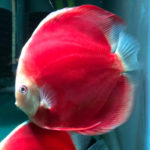



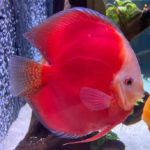






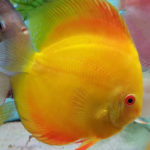





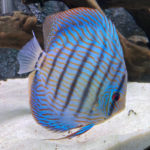
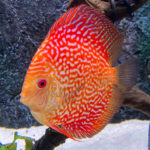
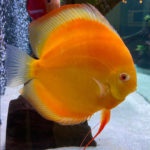
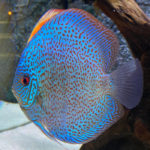













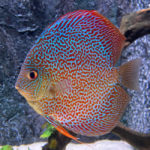

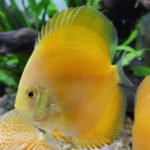

I won’t get into the names that all the breeders in Germany and Southeast Asia have come up with. The photos above should be enough to make any hobbyists have a serious issue with their wallet. What I find absolutely astounding is that all these varieties are descended from wild fish which looked like this:

Two Types of Discus
There are two distinct types of discus husbandry, the “competitive discus” and the “decorative discus”. In turn there are two good ways to keep discus:
1, The “ultra-clean way”. This is where everything is frequently changed and cleaned. It has bare bottom tanks, large water changes with RO water every day, cleaning the bottom and sides of the aquarium with every day or even more. “Competitive discus” are generally raised this way.
2, The “ultra-filtered way”. This is where each adult discus has at least 100 square feet (9.29 m2)of well-established, uncleaned, mature filter media surface area. Ammonia and nitrites should be zero, but the nitrates can float up. UV is very beneficial. This is the best way to keep “decorative discus”.
Both methods ensure the water is low in bacteria and very clean. Note that something in between these two methods typically doesn’t work very well. It is one or the other.
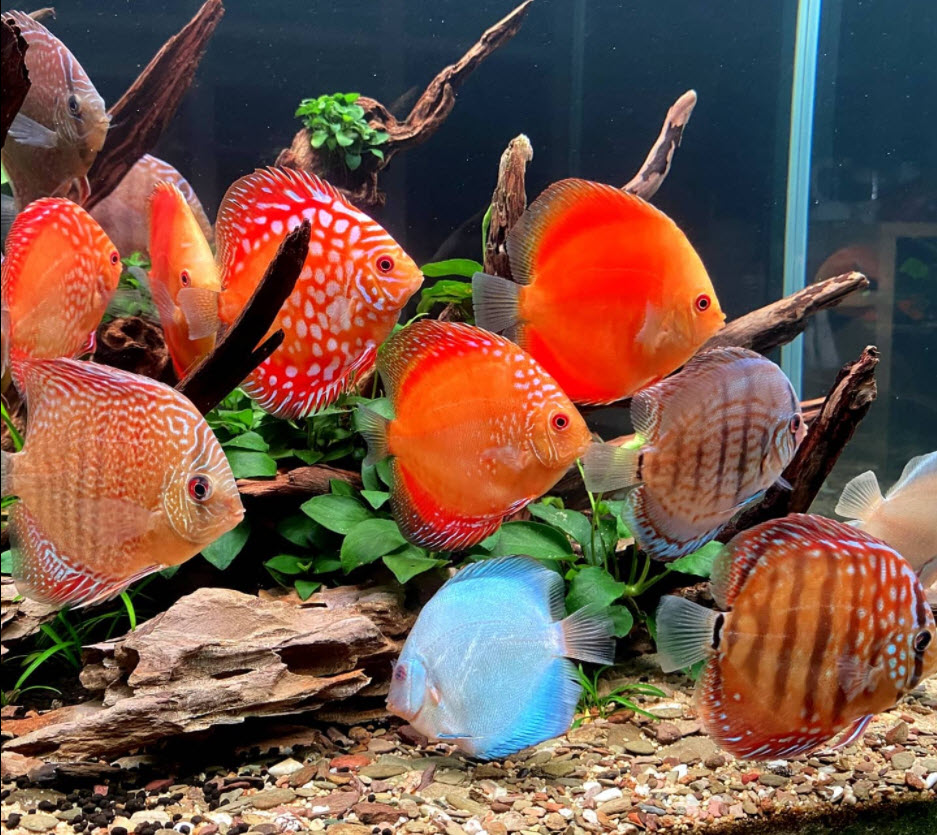
There are some hobbyists who raise discus to win in competitions which are held periodically all over the nation. Most of the breeders of discus are also raising their discus with the goal of winning these competitions. We will call these fish “competitive discus”. Then there are the bulk of the hobbyists who simply want an attractive discus aquarium in their home. We will call these discus “decorative discus”. There is a lot of confusion created by this distinction.
Discus are like many fish in that the ultimate size they reach is determined by how they are raised. The larger the competitive discus, the more likely it is to win awards.
Competitive discus are larger and win more competitions if the following “ultra-clean” conditions are met:
- Bare Bottom tank
- Vacuuming and cleaning at least once a day
- Daily 50% water changes
- 50-70 TDS water (RO water slightly remineralized)
- 82 to 90°F (27 to 32°C) water temperature
- Clean Filter
- Heavy feeding at least three times a day

So many well meaning but ill-informed individuals on social media (and YouTube video makers!) recommend high temperatures, bare bottom tanks, and 50% water changes with vacuuming every day as “essential” for ALL discus. This is not needed if one is only wanting to grow reasonably sized, healthy, colorful discus in a decorative aquarium.
The problem with the “competitive” approach is a matter of time. It requires so much attention that everyone ends up slacking off and only doing the vacuuming, cleaning and water changes every week or so. This typically doesn’t work! One will typically have the least problems with discus if one does either an ultraclean competitive approach or an ultrafiltered decorative approach. One or the other.
We will leave the competitive discus picture to the “experts” on YouTube and ONLY talk about decorative discus here-in.

Information on Discus
The following articles will be useful reading if you are contemplating keeping discus:


